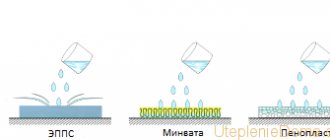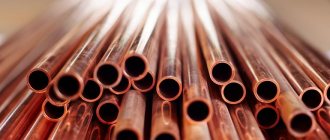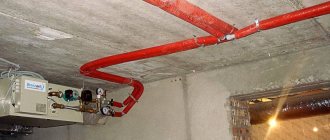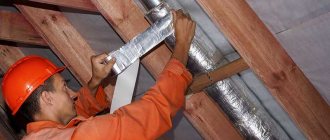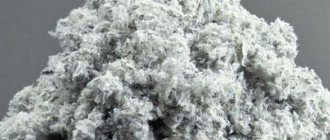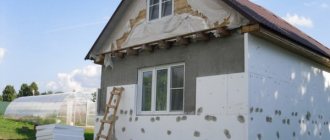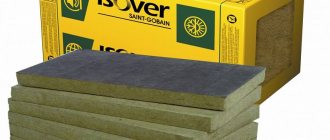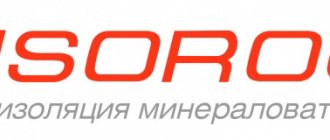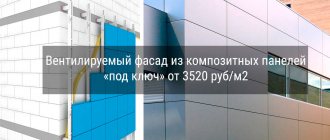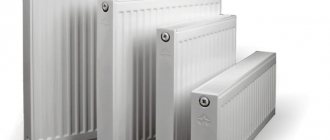When choosing a stove or fireplace, you need to take into account not only the design of the heat source, but also the type of fuel. Solid fuel for various types of stoves is usually used when heating a relatively small area. There are several types of energy sources and many subspecies. Let's look at the features, advantages and disadvantages of the main options.
Figure 1. Traditional firewood is used as fuel
Heating with classic wood burning
Firewood is a traditional option that literally everyone has encountered. Classic logs are gradually being replaced by modern alternatives. But they don’t intend to completely give up their position on firewood – they still have many advantages over new products.
Advantages of firewood:
- characteristics that are familiar to everyone - you know what to expect from wood blanks;
- aesthetic component; in fireplaces, firewood is used not only for practical purposes - many consumers still value the characteristic crackling sound in the hearth; sound accompaniment is the result of the effect of high temperature on the moisture remaining in the logs; modern solutions do not indulge in such aesthetics;
- relatively constant parameters; firewood can become damp and moldy, but it does not tend to crumble even after many years of storage;
- Wood ash has almost no smell.
Figure 2. Firewood in the woodshed
Disadvantages of firewood:
- the need for a dry place for storage - logs do not tolerate high levels of moisture;
- different shapes and sizes (even if they are close in this regard) do not contribute to the convenience of storage;
- shorter combustion time than wood alternatives;
- less heat transfer;
- different combustion intensity; Usually the logs flare up for a certain time, followed by a culminating heat emission and attenuation;
- a large amount of ash – at least 15%;
- smoke;
- potential health hazard; Firewood is safe, but damp logs can harbor fungus and mold, and can produce toxic smoke when burned.
Firewood can be chopped or sawn. But much more important is the nature of the wood, on which its calorific value depends. Approximate indicators of various tree species are in the table.
| Breed | Calorific potential, kW/h/kg |
| Larch | 4,3 |
| Spruce | 4,3 |
| Pine | 4,3 |
| Oak | 4,2 |
| Beech | 4,2 |
| Hornbeam | 4,2 |
| Ash | 4,2 |
| Birch | 4,2 |
Briquettes (eurowood)
Figure 3. Euro-firewood in a stove
Briquettes are fuel for stoves, formed by pressing wood waste. During production, shavings, wood dust, chips, etc. are used. Thanks to the plant binder - lignin - Euro firewood under normal conditions reliably holds its shape and does not crumble.
There are 3 types of Eurobriquettes.
Ruf
Figure 4. Ruf Eurobriquettes
This is the most popular option, which Europeans have been using for several years. After the press works, some nice, practical bricks remain. They bear little resemblance to firewood, but are characterized by an optimal ratio of quality and cost.
Pini Kay
This type is in many ways similar to Ruf, but briquette firing is added to the production cycle. This allows you to increase the service life and resistance of Eurowood to environmental aggression. Thanks to firing, a protective shell is formed on the outside of the product.
Nestro
Combined view. Unlike the first two, it has a shape similar to ordinary logs. There is a through hole inside the elements. There is no external firing.
Advantages of briquettes:
- long burning life - up to 4 times longer than the traditional version; the advantage is due to the higher density of Eurowood;
- high heat transfer - approximately twice as high as that of logs;
- equal combustion intensity; unlike firewood, pressed blocks burn evenly; Moreover, even coals are capable of giving off the same amount of heat as a “fresh” briquette;
- almost complete non-waste - after the combustion of the blocks, 1-3% of ash remains;
- usefulness of ash; the previous plus can be considered a disadvantage, since waste serves as a very good fertilizer, which contains a lot of potassium;
- environmental friendliness; briquettes do not contain any harmful substances; Moreover, European firewood almost does not smoke, and the smoke that exists does not smell;
- saving;
- ease of storage and operation; the blocks are easy to store, they require less than firewood, and there is no waste left behind - secondary, but also important advantages.
Figure 5. Euro firewood with a hole.
Disadvantages of Euro firewood:
- with higher heat transfer, the blocks produce less heat than the “classic” ones; this means that they are not suitable as fuel for a sauna stove;
- under unimportant storage conditions they may crumble; the reason is excellent moisture resistance; but in this case the advantage becomes a disadvantage;
- variable characteristics depending on manufacturers; you need to try out different options to understand your needs and preferences; briquettes vary somewhat in density and strength;
- the remains of the blocks have a not very pleasant smell;
- exceptional practicality - to the detriment of the aesthetic component.
Pellets
Figure 6. Pressed pellets for stoves
Pellets are small fuel granules, which are also produced by pressing waste from the woodworking industry and other types of economic activities. First, the raw materials are turned into wood dust, then thoroughly dried and granulated in special forms. Granules are mainly used in stoves that are designed specifically for this type of fuel.
Depending on the raw material, pellets are divided into the following types:
- wood - from wood processing waste;
- straw;
- granules made from sunflower husks;
- peat.
Figure 7. Burning pellets
The advantages of fuel pellets are similar to the advantages of Eurobriquettes. But pellets also have an original advantage - their small dimensions allow them to be used in boilers with automatic fuel loading.
The downside is that in most cases, pellets are only suitable for equipment that was originally designed for pellets. Although the use of pressed miniblocks is also possible in conventional ovens. But this requires some modernization of the units.
Classification of heating oil
Heating oil is a product of direct distillation of secondary diesel fractions of oil. Due to its high calorific value and low cost, it is widely used for heating residential and industrial buildings and premises.
Classification of heating oil is carried out according to a number of criteria. Based on the characteristics of viscosity, heat transfer and pour point, heating oil is divided into:
- lung,
- average,
- heavy.
Light types are lighter in color, more fluid and produce more thermal energy. They are often used in industry to fuel large generators. Heavy types are denser and without additional heating can freeze in containers, especially in the cold season.
Advantages of heating oil:
- low cost, - no unpleasant odor when burning, - freezing temperature is not higher than -28⁰C, which allows it to be used in winter.
The characteristics of household heating fuel are the basis for choosing one or another type of fuel for specific needs. Let's consider the main ones:
Density.
Heating oil is heavier than diesel and has a higher density. This indicator is not standardized by GOST, but is necessarily determined for each type. Determination occurs at a standard temperature of 20⁰C. The average density is 930 kg/m3. As the temperature increases, the density decreases, that is, the fuel dilutes.
Viscosity.
Viscosity is one of the main indicators of the quality of heating oil and its performance properties. Heating oil is more viscous than diesel, and therefore releases more heat during combustion. The kinematic viscosity of heating oil is determined at a temperature of 20⁰С and according to standards is no more than 8 mm2/s. For comparison, for DT this figure is 1.8-5 mm2/s.
Sulfur content.
Based on sulfur content, heating oil is divided into sulfur and low-sulfur. The mass fraction of sulfur for them is up to 1.1% and 0.5%, respectively. Since, in order to preserve the environment, global fuel standards provide for a reduction in sulfur content, low-sulfur fuel is becoming more popular. Also, its use increases the service life of heating equipment. Such fuel is produced from petroleum distillates with low sulfur content with additional hydrotreating.
Ash content.
Ash content is a non-combustible residue from mineral mixtures from complete combustion of fuel. A high value of this indicator leads to soot deposition on the walls of heat-generating equipment, which contributes to a decrease in heating efficiency. The ash content of heating oil is low, about 0.02%, so it is excellent for heating.
Acidity.
Fuel acidity is the percentage of organic and other acidic compounds it contains (naphthenes, phenols, asphaltogens, etc.). High acid content causes corrosion of fuel tanks and fuel system parts. Therefore, GOST regulates the acidity of heating oil to no more than 5 mg KOH/100 cm3.
Coking.
Coking is caused by the presence of coke residue (coal). The higher the carbonization of the fuel, the better the protection against corrosion of adjacent metals. Especially at high temperatures, which is typical for thermal installations. The coking index of heating oil is measured from the 10% residue and is no more than 0.35%.
Water content.
Heating oil may have traces of water content, but nothing more. Moisture in the fuel impairs its performance and can disrupt the combustion mode by interrupting the fuel supply to the injectors. In addition, increased water content increases corrosion of fuel system parts.
The characteristics of heating oil are regulated according to TU 38.101656 .
Coal
The fourth type of solid energy source. The basis of minerals is carbon. Other chemicals are present in smaller quantities. The composition is also related to the age of the fuel:
- the youngest is the brown species;
- older - stone;
- the oldest is anthracite.
Figure 8. Anthracite coal
Types of coal. Pros and cons of using
Some solid fuels are transformations of the same organic material. For example, peat first forms in swamps from dead plant matter. It is then carbonized and turns into brown coal. At the next stage - into coal.
The disadvantages of peat and brown coal are a large amount of surface moisture. If you dry them well, they will crumble. This can be eliminated by pressing peat into briquettes. However, when burned, this fuel produces a lot of ash. This makes caring for the stove difficult: you constantly need to clean the grates and ash pan, but even this is made difficult by the fact that the ash is very light and is sprayed around the room.
Peat in briquettes is compressed with sawdust, which makes it of higher quality and convenient for storage and use. Brown coal is not suitable for heating furnaces, so it is practically not used. In addition, it has a low calorific value (3000±500 kcal/kg) and, accordingly, efficiency.

